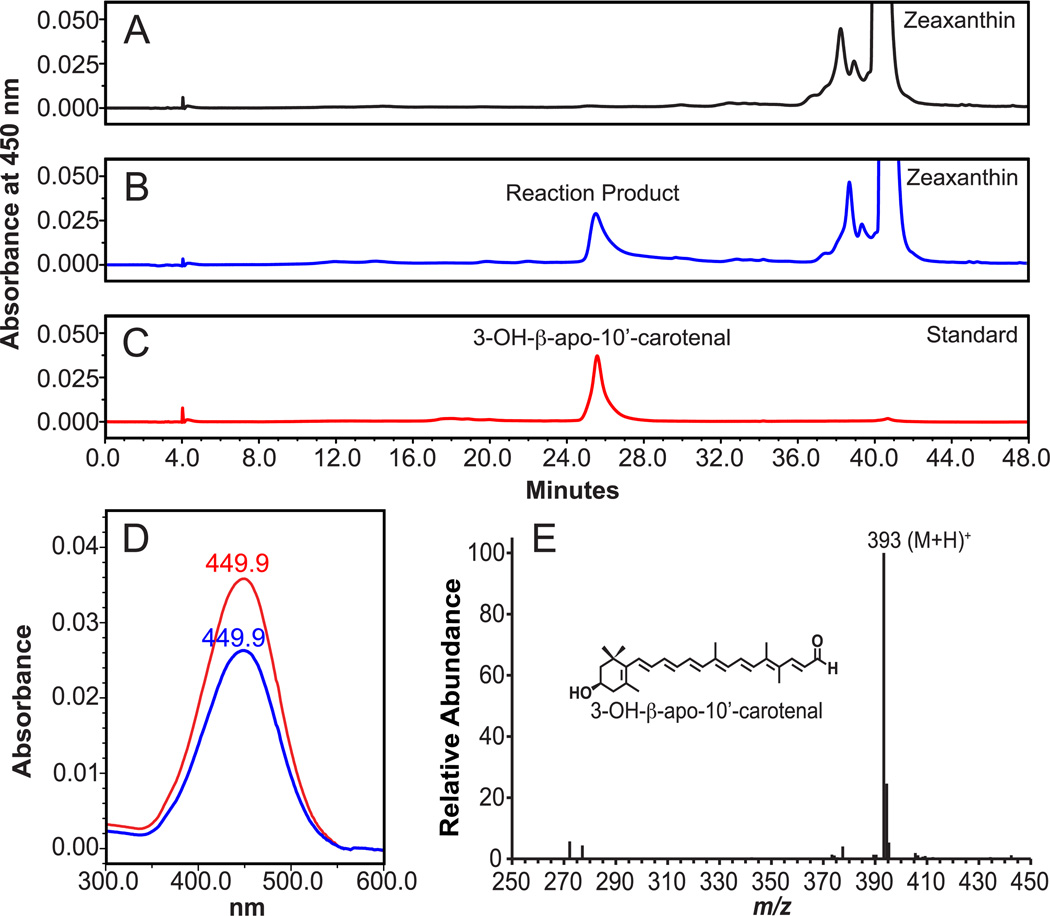Fig 2.
Identification of cleavage products from zeaxanthin by HPLC and LC-MS analysis. Zeaxanthin (20 µM) was incubated with the homogenates from either uninfected (A) or ferret CMO2-baculovirus infected (B) insect cells for 30 min. at 37°C as described in “Experimental Procedures”. The cleavage products were extracted from the incubation mixture and separated by reverse-phase HPLC using a C18 column. Peaks corresponding to the authentic 3-OH-β-apo-10’-carotenal standard (C) were detected at 450 nm only in the incubation mixture with the homogenates of ferret CMO2-baculovirus infected cells (B), but not in that of the uninfected cells (A). D, spectral analysis of the cleavage product (blue line) of zeaxanthin vs. 3-OH-β-apo-10’-carotenal standard (red line). Both the RT and absorption spectrum of the product matched exactly with that of the 3-OH-β-apo-10’-carotenal standard. LC-MS analysis (E) of the cleavage product showed a base peak of m/z 393, which corresponds to the protonated molecule (M+H)+ of the authentic 3-OH-β-apo-10’-carotenal standard.

